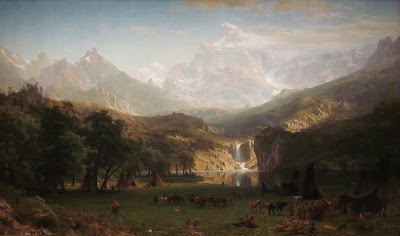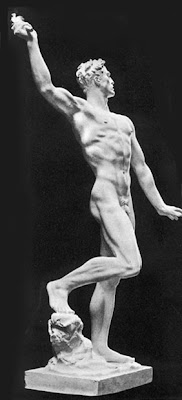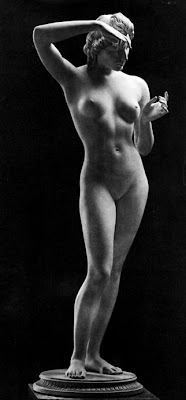Nationality: German
Born-Died: 1842-1908
Size: 29.33 × 34.6 in. (74.5 × 88 cm)
Creation Date: 1872
Media: Oil on canvas
Location: Private collection
I don't recall ever seeing it before but it was in my files so I must have seen it. When I saw it this morning, I though, "Wow, that's beautiful." I was really struck by the color, the value contrast (meaning light and dark, not philosophical values), the gestures of the figures and the overall arrangement of the shapes. Then, I started noticing the various narrative elements such as the cat NOT playing with the ball of string and instead staring at the boy drinking milk. The little girl is lovingly gazing into the face of her new sibling and it seems as if the maid(?) is trying to return the child to the mother. However, the mother isn't looking so good--she is quite shadowy. The more I look at this image, the more questions I have. What is the significance, if any, of the clock's time? What is the basket above the bed? Is the mother going to die? I'm going to look at it a while longer.




















